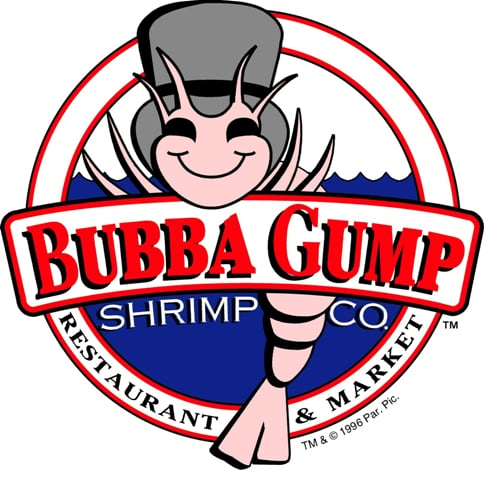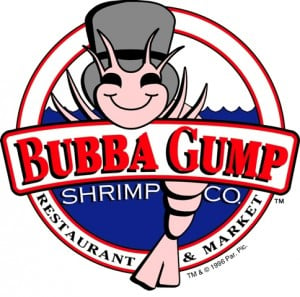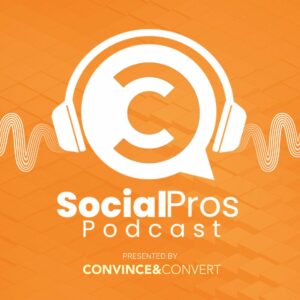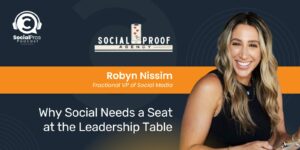Hosted By
About Social Pros Podcast:
Social Pros is one of the longest-running marketing podcasts in existence (10 YEARS and counting), and was recently recognized as the #1 Audio/Podcast Series by the Content Marketing Awards.
Our purpose? Making sure that we speak to real people doing real work in social media.
Listeners get inside stories and behind-the-scenes secrets about how teams at companies like Google, Reddit, Glossier, Zillow, Lyft, Marvel, and dozens more, staff, operate, and measure their social media programs. With 600+ episodes, the Social Pros Podcast brings the humanity of social media to the forefront, while providing incredibly useful marketing strategies that listeners can immediately implement.
Follow Social Pros on LinkedIn.
To inquire about becoming a guest or show sponsor, please email our Executive Producer, Leanna Pham, at leanna@convinceandconvert.com.
Apple Podcast Reviews:
The Social Pros podcast has quickly become a favorite in my feed! I'm consistently impressed by the engaging conversations, insightful content, and actionable ideas. I truly learn something every time I listen!
@Arlie KThis is absolutely an awesome listen for anyone in communications or social media!!
@Will31CThis podcast has become one of my staple weekly podcasts for learning about marketing! Love the conversations that they have and it's always enjoyable and educational!
@Simonstone95Love the podcast - informative, in depth and spot on for any business size.
@MissTriathlon
This is Episode 4 of the Social Pros Podcast : Real People Doing Real Work in Social Media. This episode features Lauren Fernandez, the head of social media for Landry’s Restaurants. Read on for insights from Lauren, our “Work It Out” advice segment, and Eric’s Social Media Stat of the Week (this week: has the role […]

 This is Episode 4 of the Social Pros Podcast : Real People Doing Real Work in Social Media. This episode features Lauren Fernandez, the head of social media for Landry’s Restaurants. Read on for insights from Lauren, our “Work It Out” advice segment, and Eric’s Social Media Stat of the Week (this week: has the role of the salesperson changed because of social media?).
This is Episode 4 of the Social Pros Podcast : Real People Doing Real Work in Social Media. This episode features Lauren Fernandez, the head of social media for Landry’s Restaurants. Read on for insights from Lauren, our “Work It Out” advice segment, and Eric’s Social Media Stat of the Week (this week: has the role of the salesperson changed because of social media?).
Listen Now
Click the play button to listen here:
[podcast]http://socialpros.podbean.com/mf/play/tdpmvc/SocialProsEpisode4.mp3[/podcast]
Download the audio file: http://socialpros.podbean.com/mf/play/tdpmvc/SocialProsEpisode4.mp3
The RSS feed is: http://feeds.feedburner.com/socialprospodcast
Find us on iTunes: http://itunes.apple.com/us/podcast/convince-convert-blog-social/id499844469
Please Support Our Sponsors
Huge thanks to Argyle Social for their presenting sponsorship, as well as Infusionsoft and Jim Kukral at DigitalBookLaunch. We use Argyle Social for our social engagement; we use Infusionsoft for our email; and Jim is our guest host for the podcast and a smart guy)
Social Pros Transcript For Your Reading Enjoyment
Transcription services from our friends at Speechpad.com
Announcer: Ladies and gentlemen of the Internet, welcome to the Social Pros podcast, where we shine the spotlight on real people doing real work in social media. With your host, Jay Baer of Convince & Convert, and special contributor Eric Boggs of Argyle Social.
Ready? Let’s get to work.
Jay: Hey, it’s Jay Baer. We are back on Social Pros. This is Episode 4, I believe. I’m joined by my trusty sidekick and social media marketing impresario, Eric Boggs. Eric, how are you my friend?
Eric: I’m great, Jay. Episode 4: “A New Hope.” This will be a good one.
Jay: This is the one where Jar-Jar Binks learns Twitter.
Eric: Exactly.
Jay: That’s what this episode is all about. This is going to be fantastic. We have a fantastic guest today. Speaking of social media marketing impresarios, Lauren Fernandez, from Landry’s Restaurants is going to join us on the show today. They own just about every restaurant that’s not a Taco Bell in this great land of ours, and are doing an amazing job in social. We’ll talk to Lauren about how that works. Her life is crazy.
I was hoping that, for the taping, we would have, I don’t know, lobster or something. Mac and cheese I would take, clam chowder, but we’ve got nothing.
Eric: I just ate a handful of Gobstoppers. That should tie me over.
Jay: Handful of Gobstoppers? Hopefully they were the minis.
Eric: They were the small ones, yeah. They were not the golf ball size ones.
Jay: That’s not the best for podcast audio quality when you have a mouthful of Gobstoppers. That’s my professional podcast opinion after three episodes.
Jay’s Thought of the Week
Let’s get right into it. Lots of stuff going on the last week or so. For this week’s Jay’s Thought, I am very fascinated by what appears to be finally, at long last, after a lot of gnashing of teeth and conversation, what appears to be the actual launch of Twitter’s self-serve ads. Partnership with American Express, apparently 10,000 small businesses who are American Express cardholders are going to be invited to participate in this expanded beta in the next few weeks, to really turn over the keys to the Twitter ad system.
You guys have some experience running Twitter ads at Argyle Social, do you not?
Eric: We do. We’ve been on the promoted products beta since, geez, probably since the fall or maybe late summer of last year. We’ve run programs off and on. Some months we’ve invested very heavily in the channel. Other months we’ve done little at all. This is the big leap forward for Twitter, in terms of validating their ability to make money.
Jay: I think it’s really interesting to partner with American Express as well, because it gives them instant credibility. They already have the credit card data put together. It kind of gives them a slingshot effect in terms of competing, eventually, with Google AdWords.
Eric: Well, it definitely lowers the hurdle in terms of activation. But I’ll tell you based on our experience with promoter products, it’s incredibly different from spinning up some ads on Google.
Google Ads, you kind of set it and forget it. Promoted tweets aren’t like that. The content changes more frequently. There’s much more of a real timeliness to it. You’ve got to keep your foot on the gas the whole time in terms of changing copy, updating content, promoting this tweet versus promoting that tweet.
It’s going to be interesting to see how small businesses – presumably these are the shoe stores and cupcake shops that are on the American Express bandwagon – it’s going to be interesting to see how they adopt this.
Jay: I wonder, once we have thousands, and potentially at scale hundreds of thousands or more, small businesses throughout the world participating in promoted products and doing promoted tweets and promoted accounts, how are people going to feel about that in terms of clutter in their stream?
One of the things that Twitter does now is they only show the highest bid. In many cases, you just see one ad, one promoted tweet per keyword per search. But that obviously won’t be able to work forever, the same way AdWords has 2, 5, 10, 50 different ads running at a time.
Are we going to see a lot of noise in the stream that’s going to be a detriment or a turnoff to Twitter users?
Eric: I think you’re asking an interesting question around inventory. Think about how many Google searches there are, how many pages deep there are. It’s overwhelmingly in front of a computer, on a laptop or PC. Whereas, think about Twitter consumption. It’s on the go, it’s on mobile devices, and people typically aren’t scrolling through pages and pages of search results.
So there’s going to be an inventory issue, I think, with Twitter, alongside of a clutter issue. Where do these competing ads go? If Twitter’s going to show one ad at a time, they’re not going to find the revenue scale that they’re hoping to find, when you consider the number of ads that are on the page for Facebook and Google and the like.
Jay: Yeah, which makes you think that what we believe to be the Twitter UI today may not in fact be the Twitter UI. They will surely find a way to run in a parallel column, maybe Tweet Deck for example, a column of matching ads that runs alongside non-advertising tweets, possibly.
Eric: Potentially. I have no idea. It’s going to be interesting to see how they continue to change their business model.
I think it’s a great opportunity in the same way that search ads are actually incredibly helpful. I think that there is really an opportunity for promoted tweets and promoted real time content to be genuinely helpful and useful for the end consumer.
Jay: It’s so funny you say that about search ads and pay-per-click ads and AdWords and those kind of things. There is a distinct bias amongst social and digital marketers to that effect. When I talk to regular people who don’t make their living doing what we do, I invariably hear from people, “Oh, I’ve never clicked on a Google ad. I never click on ads.” I almost always click on ads.
Eric: I do too.
Jay: My assumption is look, if you’re going to pay money, if you’re going to pay $1, $2, $3 plus for a click, you’re probably either A, super relevant to what I want, or B, a terrible pay-per-click marketer, in which case Google is going to drop you off the page eventually anyway.
Eric: For me, it’s if you’re smart enough to run a reasonable paid search campaign, you’re probably smart enough to put together the product that I want.
Jay: That’s a research project that we should do – the bias of the professional digital marketer around the propensity to click on digital ads. Same is probably true in Facebook ads, as well, I would guess. We’ll see. Maybe Twitter ads as well.
Eric: Facebook ads just creep me out. Twitter ads, we’ll see. I haven’t seen enough of them to form a bias yet.
Jay: As long as I can do some teeth whitening and some weight loss, I’ll be dialed in on the Facebook ads.
What do we have for this week’s Social Media Stat of the Week, Eric?
Eric’s Social Media Stat of the Week: Customers Independently Complete 60% of the Purchasing Decision Process Before They Contact a Sales Rep
Eric: This week’s stat of the week is an oldie but a goodie. An oldie in the sense that it’s from I think August 2011, but it’s from a B2B marketing . . .
Jay: That’s Dead Sea Scrolls in our business. 2011?
Eric: I know. Just think back to that time. Oh, man, those were some good days.
Jay: Oh, those six months ago, the halcyon days of old.
Eric: The salad days, if you will.
It’s from a 2011 marketing survey by the Corporate Executive Board. Unlike previous stats of the week, where I’m going to barrage you with a list of interesting nuggets, I’m going to share what was really the primary takeaway from this research.
They surveyed about 2,500 B2B consumers or buyers. They found that customers independently complete about 60% of the purchasing decision process before they contacted a sales rep. I think that’s been a known quantity for some time.
I happened to see this stat pass by my Twitter stream yesterday or today. I think it was Jim Tobin that tweeted it. It kind of took me aback a little bit, because it made me think about the context of how we do sales at Argyle, and the fact that people are generally much further down the decision path than we probably think when we’re on the phone with them.
Two, it makes me think, how are we doing social media? Are we thinking about social media marketing in the context of influencing buying decisions? Or are we just doing social media marketing to be thought leaders and interesting people and cool guys to hang around with?
Jay: Well, I think clearly the answer is, in many cases, the latter, unfortunately. What we talk about all the time with our clients, and you and I have had this conversation, is that content and social are the same thing, right? It’s two sides of the same coin.
Content is the fire, and social is the gas on that fire. People want to talk to a sales rep now to close the deal. Whereas even five to ten years ago, it was I need to talk to a sales rep to even open the conversation.
What has shifted that pendulum is people now believe, and rightfully so in most cases, that they can access information faster, in a more relevant way, and with a less icky, “call me all the time and bother me” way, themselves, than they can “please call me and leave voicemails” and things like that.
There are a lot of micro-issues at play here in terms of the prevalence of deep information on websites, people’s moving away from voicemail and telephone communication as their primary means of business to business connectivity and some other things there.
But it doesn’t surprise me at all. If there’s one thing that social media does well, it’s make us increasingly passive- aggressive.
Eric: Exactly. Yeah.
Jay: When you see this kind of stat, that people call a sales rep after they’re 60% of the way educated, and then you still have companies, especially in a B2B context, that are massively reluctant to say, “Well, let’s tell people what we actually sell.” The classic one, and Marcus Sheridan talks about this a lot in his presentations, is the reluctance to put pricing on your website.
Eric: Yes, oh yes.
Jay: We don’t want to put pricing, because it’ll disqualify us. You know what we should do instead? Let’s use sales resources to disqualify people.
This idea that we can’t be too specific about what we sell, because if we just get them on the phone, we’ll close them. It’s just crazy.
Eric: Yeah, it’s definitely an old school mentality. There is a balance. Argyle, we’re building an inside sales organization. There is a balance between . . . you definitely want to get people on the phone so you can sell to them, but you want it to be the right people at the right time, with the right priming in terms of the information that they’ve gotten.
This statistic struck me. I think implicitly I knew that this was the case and that this was happening. But to see it spelled out from a reputable organization that has done reputable research was just mind-boggling.
To your point, there is the 60% void, and social is filling that void, with or without the input from businesses and brands.
If ever there was a justification to invest in content marketing on the B2B side, a number like this is definitely it.
Jay: Absolutely. This appears to be the self-serve episode. We have the self-serve tweets, we have the self-serve of information in the decision-making path, and we have actually not the self-serve restaurant business. I have completely ruined my own paradigm. I don’t think, Lauren, you have any self-serve restaurants, do you?
Lauren: I don’t think so, guys.
Special Guest: Lauren Fernandez, Landry’s Restaurants
Jay: How is that for the amazing segue? Lauren Fernandez joins us on the Social Pros podcast. She is director of all things social and awesome at Landry’s Restaurants. Because Landry’s itself as a brand is only a few of your restaurants, why don’t you tell the Social Pros folks some of the amazing eatery brands that you represent?
Lauren: Sure, sure. Landry’s Inc. is a hospitality and gaming type company. We have more than 50 brands with more than 400 locations. This can be anything from Morton’s, the steakhouse, McCormick & Schmick’s. We have the Golden Nugget in Las Vegas and Atlantic City. We have high-end steakhouses. We have Bubba Gump Shrimp Company, which means I get to quote Forrest Gump all the time. We also have things like Rainforest Cafe.
Jay: That’s a resume builder is what that is.
Lauren: Yes. We have different hotels, and gaming is also, as I said, very big with our company. We do handle a lot, and for us it’s very much, each brand is its individual brand. It’s not an overall corporate Landry’s image.
We take each brand and we do it specifically for that specific concept, that specific location. Each brand has its own budget, has its own thought process, has a different brand managers. We’re set up very centralized here.
Jay: It’s interesting, because you do have quite a swathe of different concepts that obviously attract a different diner or gambler, etc. How does that differentiation in brand manifest in social media? Do you have social conversation guidelines, social tonality guidelines, that people who are doing a Facebook status update for example refer to, so that it “sounds like Bubba Gump” as opposed to “sounds like Morton’s”?
Lauren: Yes. What we do is we have brand personality documents. The person that handles all of our updates is our Social Media Coordinator. She meets with each brand manager, and she discusses with them, okay, this is the kind of voice we’re looking for, this is the type of events we have, these are the type of customers, demographics we have.
From there, she creates a content calendar on a monthly basis, talks to them on a weekly basis, and fills that in. She runs everything by me, runs everything by the brand managers, makes sure that it’s good to go.
Each brand has its own calendar, its own presence, its own thought process. For some brands, we’re non-Twitter. For some brands, we’re only on Facebook. Some brands have a blog, Google+, things like that. It really depends on the brand and the presence that they have.
Jay: How many people do you have operating this?
Lauren: One.
Jay: 40, 50? You have one person doing 50 restaurant brands in social media?
Lauren: Yes. We have a two person social media team here.
Jay: All the professional social media managers on the Social Pros podcast listening brigade have just decided to find you and beat you, because it’s going to be hard for them to go to their CEO and CMO and ask for more resources when you have one person doing 50 different brands.
Lauren: We are pretty much superheroes.
Eric: Wow. What’s the combined audience size of all those brands, if you had to ballpark it?
Lauren: Oh, gosh. The thing is that, for some brands on Facebook, we have a page for each location. For example, Chart House is one of our brands that has a different page for its local location. We’re lucky in that some of the brands are just monitoring. Some of the brands are updating, some of the brands we respond to from a crisis communication standpoint. We have a social media post assessment grid that we put together and we follow those steps. We have some great chefs online that tweet and talk and do all that.
It gets a little hairy. I’m not going to lie, but it’s something that we are able to be here from 9:00 to 6:00 during the week. We monitor mobile-ly, we monitor by laptop at the end of the day, and our Social Media Coordinator comes in every day. First thing she does is she responds to all of our Yelp reviews and complaints. We are very good at doing multiple tasks at once.
Jay: It’s interesting that the first thing you do is respond to Yelp. While that, of course, makes sense given the importance of Yelp to your particular category, I think the larger lesson there is that look, you’ve got to pick the right tools for the right audience.
You said it yourself, Lauren, in your explanation. For some brands, you’re on Twitter. For some brands, you’re on Facebook. For some brands, you’re just doing monitoring.
We are falling into a trap as an industry where people say, “Well, we’ve got to do Facebook, and we’ve got to do Twitter.”
Lauren: Exactly.
Jay: As if that is the recipe. Maybe we’ll do Google+, or maybe we’ll do Pinterest, because that’s kind of fun now, right?
There is no recipe. The recipe is what works for your particular company, your particular brand. Not to mention the fact, as Eric knows, we’ve talked about this a lot of times. We always talked about Facebook and Twitter in the same sentence, but from an actual user-based standpoint, Facebook’s 52% of adult Americans and Twitter’s 8%. So to put them in the same sentence every time is a little bit unfair to Facebook.
Lauren: Exactly. I will be honest, our major presence is on Facebook. We do have a few avenues that we’re looking at to where we don’t just jump on a platform. We’re very lucky.
For example with Vic and Anthony’s, that is one of our high end steakhouses, we have a chef that tweets and he’s incredible. He tweets from his personal, behind the scenes, being an executive concept chef. For him, for example, we’re looking into Instagrams. How can he use that to show his customers, his loyal people who come in every Friday and order the same steak, the same cab sauv, look at the lobster tank and tap on it because they think it’s funny? He loves to do those kinds of things. He goes on radio shows for me. He goes on blogs. He does all kinds of stuff.
We’re lucky in that we have a lot of people that really live the brand every single day. Like I tell them, I said, “I’m not your mom. You know what will get you fired.” I let them have their personality and get to show that behind the scenes that’s not that corporate stamp that some people can put on multiple brands.
It’s really easy to get into a mindset of this brand’s going to be this, this brand’s going to do this, and then sometimes you sound the same. If you go and look at the way that we respond from Morton’s, McCormick and Schmick’s, things like that, Bubba Gump, they’re all different. Bubba Gump very much talks about momma and things like that.
Eric: I’m on the Bubba Gump Facebook page now, and the picture with Forrest and Lieutenant Dan that says, “Shrimping ain’t easy,” made me giggle.
Lauren: Yeah, we definitely have someone that runs . . . we have our copywriter as well, helps run our Facebook page.
If you look at our Valentine’s Day post, it’s probably one of my favorite things that he’s posted. He has the cube next to me, so he’s probably listening to me right now brag on him.
It’s just things like that that really show the personality and show, we really get the demographics. We really understand that each brand is different.
I’m very lucky that here at Landry’s, our CEO very much looks at it as marketing builds everything up. Not a lot of people get that. Not a lot of people have a CEO that really sees the value of marketing, advertising, and social media. We’re very lucky here to have that.
Jay: You talked about having the chef involved on Twitter and possibly Instagram, etc., and people in the organization knowing what would get them fired. Are you saying then that you don’t actually have social media guidelines for employees? Or do you do best practices training for people who are not in marketing? If I’m a bartender at the Chart House in whatever and I’m going to get in social media, how does that work?
Lauren: Right. We are very selective about who we let on. We do have a social media policy. They also go through training. We also are about to start something new that we call the Friday Five. It’s something that we did at Fleishman-Hillard and Hallmark.
What it is, is that every Friday, we have five links to different relevant social media articles. We’re going to do it a little bit different at Landry’s, where I have kind of split it up into buckets. So it’s social media 101. It’s our very advanced people that really get social media. It’s our GMs that only respond on Yelp. It’s people that want to know what the heck marketing and social media is. Each Friday, they’ll get an email with their pertinent group that has five links that explains why this article is relevant and interesting.
If you involve the GMs at the start, they’re going to be able to come back and tell you, “Hey, this is going on in my restaurant. Here’s a cool way that we can do this. Can we do what you suggested in this article here?” Because then you have that open line of communication. So you’re not having to go to chefs all the time and say like, “Oh, my gosh. What’s going on at your restaurant? You have to tell me.” They’re coming to you and saying, “Hey, this is what’s going on. Can we do this?” Then you can build the idea from there, which makes it a easier when we’re managing 50 plus brands.
Jay: I’m glad you mentioned email. It’s such an important communication vehicle for a lot of restaurants. How do you tie in what you’re doing in email on a week to week basis to what you’re doing in social media?
Lauren: From an email standpoint, we definitely do a lot of email, a lot of e-blasts, a lot of people that subscribe to our emails. But just from a social marketing standpoint, what we do with email is what we just talked about.
We really are in constant communication with our GMs, whether it’s our risk management team, it’s people who are talking on social media. A lot of people don’t like to talk on the phone. So email for us is very important, and from a traditional marketing standpoint, our brand managers and our marketing assistants handle all of the e-blasts and things like that. So I give them a little bit of information if they’d like that, but other than that, it’s very much right around communication for us.
Eric: Lauren, how do you measure what you’re doing? Do you use the same standard reports across all of your brands, or do some brands measure more than others?
Lauren: Yes, actually. We do things differently. We do use a combination of tools. One of the tools we use is Radian6. Obviously, with 50 plus brands, that can get a bit pricey. So we’re selective with which ones we use to . . . totally lost my train of thought. Sorry, guys.
A lot of people you hear now is that, “This return on relationship, return on engagement.” I’m sorry, that’s crap.
I have to tell you, if I ever went up to our CEO or our SVPs and told them, “Hey guys, guess what. I want you to spend $100,000, and we’re going to get return on engagement,” they would laugh at me. They would say, “What is that? What are you talking about?”
For us, it’s very much that dual process. We never do anything if I can’t tie a measurable objective into it.
Eric: Awesome.
Lauren: I tell my boss all the time, whenever I send her a strategy document, it’s split up by measurable objective, strategy, tactics. PR people love their tactics. They don’t understand the difference between what strategy is, what a tactic is, what measurable objective is.
For us, foot traffic is just as important as engagement is. Am I getting people into the store? Are they redeeming a code? Are they talking about us online? Is it turning into a sale?
If we have a blogger preview event, are they telling their friends who are bringing them into the store, and how do we track that? Action is important. Impact is important.
We measure if there’s been an increase in foot traffic. We measure if there’s been an increase in word of mouth. We measure all kinds of stuff. We group our brands together, so we can have our high-end steakhouses in one measurement type thing.
We have our specialty concept, like Rainforest Cafe and Bubba Gump, together. We do monthly reporting, and I very much value the analytics side of thing. I can tell you, when I have people say, “Oh, we did this social media stunt and it did this,” I go, “Okay, but how did that impact your bottom line?”
If it doesn’t impact your bottom line, it’s not worth it. I can’t validate what we’re doing if it’s not impacting our bottom line at the end of the day.
Eric: Hallelujah. You are preaching to the choir, Lauren. I’m working up a sweat, I’m fanning myself off. Keep going.
Lauren: It’s fine. I tend to get on a little bit of a rant when it comes to that stuff, mostly because I’ve had a lot of people talk to me lately about return on relationship. I tend to go off on my, “oh my gosh, don’t say those terms,” type thing.
I tend to talk about whiskey and grilled cheese on Twitter, so it’s a bit of a jump for me.
Jay: Return on grilled cheese, that’s the best success metric you can have.
Lauren: It would be.
Eric: How do you measure return on grilled cheese? You know it’s a mathematical equation.
Lauren: It probably is.
Jay: We can create an algorithm. We have the technology.
Lauren: As long as I can eat as much grilled cheese as possible, I think this will be a good deal for us.
Jay: I’m glad you mentioned foot traffic, because this weekend’s Work It Out segment . . . cue Work It Out music that does not exist yet.
Work It Out
This week’s Work It Out segment of the podcast is from an actual listener. David Horne emailed us, and actually as just a side note, you can go to SocialPros.com, and if you want to be on the show or ask a question in the Work It Out segment, SocialPros.com has the form to do that.
We’ll take a look at it and maybe, just maybe, we will use your question on the show as we are right now for one David Horne.
David asks: “How do we effectively combine the online and the offline in social media?” Lauren, I thought you would be the perfect guest to answer that question.
Lauren: Awesome. Combining offline and online, that’s always my favorite question. For us obviously, we want to get people into our stores. How do you do that?
It’s always going to be very difficult to track online how people are coming into the stores. It’s a hurdle that PR has seen, and advertising . . .
Jay: Unless you dress like a shrimp and come into the restaurant, then we can identify sort of ID you.
Lauren: Take a picture, right, and we can see that you’re part of us. That could probably work.
Jay: That one’s free.
Lauren: For us, it’s very much, we use a lot of codes. So it’s online codes, things that we can track. Say that you go into a restaurant. Do you mention to your server, “Hey, I saw this on Facebook.” We train our GMs and our servers to be able to keep track of those.
Then we can keep track of that, and on our back-end system can see that. It’s very much, how are you going to tie in your tactics that you have?
Jay: The customer mentions it to the server?
Lauren: Yes.
Jay: Then the server goes behind the scenes into the magic server place and notes it in the point of sale system somehow?
Lauren: Yes. We have a set-up to where, when we run contests like that or things of that nature, our GMs are very well trained. They understand the tracking system having to provide us with that information.
We’re also very lucky that we do have that set-up. Trying to get people, if it’s hey, you go onto this and you won a free appetizer, you give them an online code. They print out and get a unique code. You can scan it when they get into the restaurant, and then you can start tracking, okay, how many people by each store are coming in. Is it more successful for Los Angeles than Chicago? Then we can geo-target the next tweets and Facebook updates to be about Chicago, and push people into that store.
For us, because for example for Morton’s, we have 69 locations. Some might want to do a little bit more push because they’re not getting the numbers they need to get. We’re very lucky that we do have a way to look at all those numbers.
So that’s just one way that you can kind of tie it in. I’m not saying it’s easy. The reason that people struggle with it is because they don’t understand how to tie it in and how to be able to track and use that kind of stuff.
Jay: One of the things that makes it hard is that you can’t geo-target Facebook status updates or tweets. You can ads, but not the actual status updates.
Lauren: Right.
Eric: I’ll make a prediction, Jay. I think within the next 12 months, you’re going to be able to. It’s a no-brainer.
Jay: It is comical. The two things that are most comical about social media: A, that you don’t have different levels of administration on a Facebook page; and B, we have seriously the largest technological advance in terms of number of users in the history of the world, and you can’t geo-target, which we could do on the Web 20 years ago, at least on some level. It is really crazy that we’ve gotten this far without that capability. I very much hope that you’re right, Eric, because it would make a lot of people’s lives a whole lot easier, including yours.
Eric: I think that game changer is coming down the pike. It’s got to.
Lauren: Guys, you’ve got to think about this, though. Say that I’m Lauren in Houston, and you guys are geo-targeting people in Portland. I have 8,000 plus followers on Twitter, give or take a few. I have a ton of Portland friends. Wouldn’t you want to target those people that also have an effect on the Portland people? That can say, “Hey, Friend A, heard about this, saw this on for example Morton’s Twitter feed, and I think you should go”?
Are we making this too exclusive if we geo-target that specifically?
Jay: I think it’s a great question. You could probably do a whole show on that. I think it comes down to whether you look at social as more of a direct marketing platform or more of a brand platform.
Eric and I both come from the direct side, so I think our thought would be from an efficiency of spend and efficiency of effort standpoint, I’d rather go with what I know is relevant as opposed to what I hope is relevant.
Now if I can map that, if I can peer into the account and say, “Look, I know that Lauren has a disproportionate amount of Portland connectivity compared to the average chick in Houston, well, then hell, yeah.” But that’s a whole other level of craziness.
Lauren: Right, right. I think I kind of play devil’s advocate. You hit on the advertising, marketing mentality versus PR, to be honest.
Jay: Yeah, absolutely. I think as we move forward in this world, the same way that online advertising eventually split into a more direct side, powered more by search marketing and things like that, and more of a brand building side, which is where you still see banner ads and rich media campaigns and things like that, I think we’ll start to see that same sort of split in social as well. More direct based email equivalent type activity, and then other things that are more brand-centric. It’s going to be interesting to see.
Lauren: Exactly.
Jay: Eric, final thoughts for this week’s episode of Social Pros?
Eric: I think my final thoughts are that Lauren Fernandez is indeed a social pro.
Jay: She is a fantastic guest. We thank her for her time, and we are expecting some sort of shrimp in the mail.
Eric: 208 Rigsbee Avenue, Durham.
Lauren: Guys, if you actually tweet at me using our handles, perhaps you would get something. But if you don’t mention it, I can’t read your mind. Although this started out as a Jedi podcast type thing with a New Hope reference.
Jay: All right. We’ll do our best.
Lauren: I’m totally going to get tweets now.
Jay: I’m going to take this opportunity to thank our sponsors, including Eric and Argyle Social, the presenting sponsor of Social Pros, and Fusionsoft, who we use for all of our email marketing. Our good friend Jim Kukral at DigitalBookLaunch.com.
Actually, I will be on the road next week in Cheyenne, Wyoming, giving a speech. So Jim is going to guest host the Social Pros podcast. Eric, next week you and Jim can end up doing a far better job than you and I do. I will be so disappointed to hear how good you guys are without me.
Eric: I will do my best to prevent an overthrow or any sort of change in power, Jay, but I can’t make any promises.
Jay: I appreciate that. It’ll be like Egypt. You’re going to think it’s better, but it will actually end up worse.
All right everybody. Thanks very much. For Eric Boggs, I am Jay Baer. You are a social pro. Take care.







